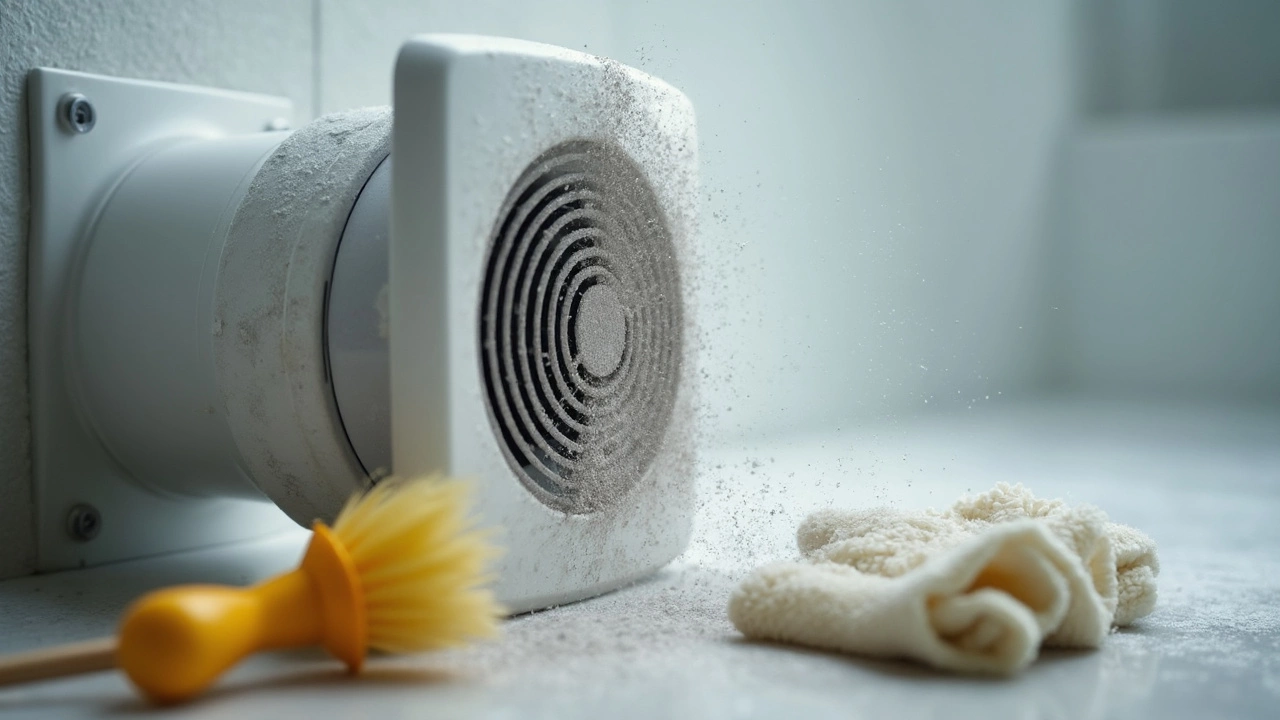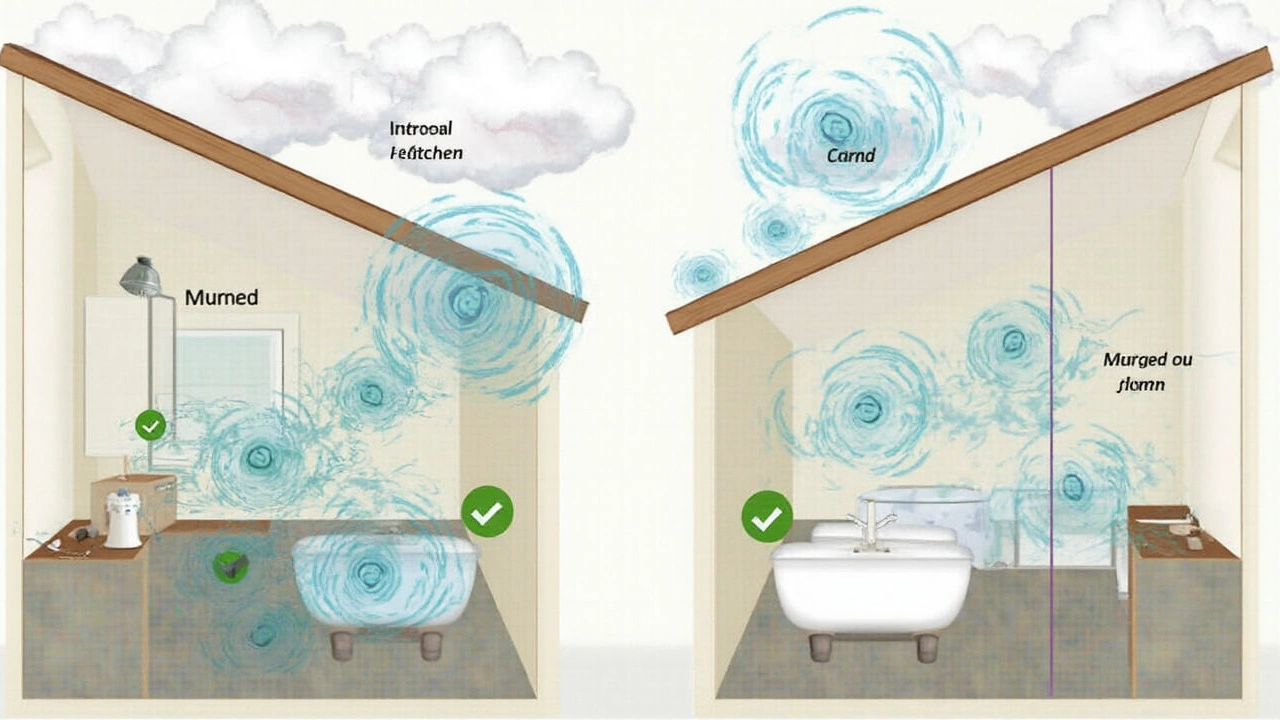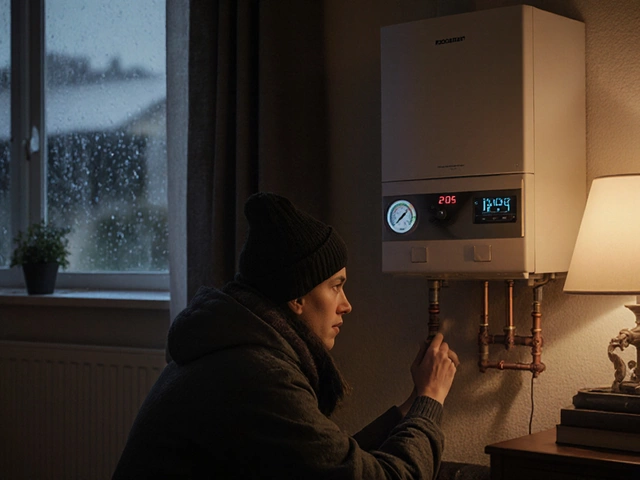Extractor fans usually go unnoticed—until they stop working or start sounding like they're chewing gravel. Most people forget about them, but those little fans actually hate being ignored. If you don’t give them a bit of attention now and then, they gather dust, grease, and grime like it's their life’s mission.
When gunk clogs up your fan, it starts losing power. Next thing you know, your kitchen’s filling up with burnt toast smoke, or moisture’s taking over your bathroom. That’s not just annoying; it’s a legit problem if you want to keep mold and smells in check. Think of your extractor fan like the lungs of your house—would you want those getting blocked?
- Why Extractor Fans Break Down
- Hidden Dangers of Skipping Service
- How to Spot Trouble Early
- Basic Servicing You Can Do Yourself
- When To Call In a Pro
Why Extractor Fans Break Down
It’s easy to forget about extractor fans until there’s a problem, and honestly, they’re not complicated. But when they do break down, the reasons are almost always practical and preventable. Most faults come down to a mix of dirt, age, and a lack of basic checks.
Dust, grease, and moisture can turn any fan into a noisy mess or, even worse, make it useless. In kitchens, oil particles latch onto fan blades and grills, blocking airflow until your extractor fan servicing becomes a matter of must instead of maybe. In bathrooms, steam can cause corrosion and mess with any electrical parts.
Wear and tear is another killer. Like anything with moving parts, the bearings and motors inside your fan get tired. If they never get a break or some occasional oil, they just burn out faster. Many everyday models are only meant to last 5-10 years, and that’s if they don’t get buried under a pile of dust first.
Bad installs cause their own problems, too. A fan not fitted snugly or venting to a cramped space will fight an uphill battle from day one. If wiring’s a mess, odd things can start happening—anything from rattling noises to sudden silence.
| Main Reason | Common Result | Prevention Tip |
|---|---|---|
| Grease and dirt buildup | Reduced airflow or total stop | Wipe down and vacuum grills every 3 months |
| Moisture/corrosion | Rust and electrical issues | Check for leaks, run the fan regularly |
| Worn out motor | Fan won’t start or smells like burning | Listen for odd noises, replace before failure |
| Poor installation | Fan rattles or pulls air poorly | Hire professionals for fitting |
Kitchens with heavy use or homes with pets (like my dog Rex, who seems to shed everywhere) will almost always clog fans faster. The more you cook or shower, the more love your fans need. Regular checks can save you the cost and hassle of a full replacement.
Hidden Dangers of Skipping Service
No one loves chores, but ignoring extractor fan servicing sets you up for headaches down the line. It’s not just about a noisy fan or dusty cover—real problems sneak in quick when fans aren’t kept in shape.
The big issue is airflow. When dust, grease, and moisture block up the grill and blades, your extractor fan can't clear out steam or smells. You get sweaty windows, stubborn odors, and worse: that extra moisture means your walls can start growing mold. According to data collected by several UK housing associations, homes with poorly maintained fans are over twice as likely to report mold and damp problems.
Blocked fans also drive up your energy bills. A gunked-up fan has to work harder, using more electricity but delivering less airflow. If your kitchen or bathroom feels stuffy no matter how long you run the fan, that’s a red flag. Overheating is another risk—extractor fan motors aren’t made for constant battles against thick layers of dust. This can eventually burn out the motor, and those repairs don’t come cheap.
- Mold growth in bathrooms and kitchens goes up by nearly 50% when extractor fans aren’t cleaned every year*
- Firefighters warn that greasy build-up in kitchen extractor fans is a dangerous fire risk
- Stale air and high humidity boost dust mite and bacteria growth, which is rough if you’ve got allergies
| Risk | What Happens | Impact |
|---|---|---|
| Mold | Moisture builds up, especially on cold walls | Musty smells, allergy problems, damage to paint and plaster |
| Fire hazard | Grease and dust can catch fire if the fan overheats | Serious property risk, possible injury |
| Higher bills | Clogged fans work harder and use more electricity | Wasted money every year |
It's not just about comfort—servicing your extractor fan means keeping your home healthier, safer, and sometimes even cheaper to run.

How to Spot Trouble Early
Catching fan issues before they get ugly can save you time and money on repairs. Let’s talk about the tell-tale signs that your extractor fan servicing can’t wait much longer.
- Weird noises: If your fan starts rattling, clicking, or making a buzzing sound, something’s wrong. Most of the time, it’s just a loose screw or clogged-up blades. But ignore it, and you might end up with a dead motor.
- Weak airflow: If steam or cooking smells linger longer than usual, your fan probably isn’t pulling its weight anymore. This usually means there’s a build-up of dust, grease, or the filter is blocked.
- Visible dirt or gunk: Look up at your fan—see any sticky residue or fluffy dust? That mess chokes the fan and affects air quality, especially in kitchens and bathrooms.
- Random shut-offs: Is your fan quitting before it's finished? Overheating from clogged parts can trigger automatic safety shut-offs. That’s a major red flag.
- Mold or damp patches nearby: If you spot mold around your fan or patches of damp, the fan’s just not shifting moisture properly. Left unchecked, this can turn into a bigger problem fast.
Don’t wait until your fan completely gives up. If you notice any of these signs, schedule a clean-up or a quick check right away. These problems never fix themselves, and letting them slide just means pricier repairs later on.
Basic Servicing You Can Do Yourself
You don’t have to be a pro to keep your extractor fan servicing in check. A bit of clearing and cleaning every couple of months goes a long way in keeping the fan running smoothly and your air fresh. Plus, it’ll save you cash—replacing a broken fan or dealing with damp walls is way pricier than ten minutes with a damp cloth and screwdriver.
Here’s what you can do at home:
- Turn off the power at the switch or breaker before touching the fan. This part’s non-negotiable.
- Remove the cover or grille. Most covers pop off with a gentle tug or a couple of screws. Take it off and soak it in warm, soapy water to get rid of dust and grease.
- Wipe the blades. Use a damp cloth (not soaking!) to wipe blades and inside the unit. If it’s bathroom fan, you might spot dust bunnies and lint; kitchen fans will have more sticky, greasy buildup.
- Vacuum the vent. A vacuum with a nozzle attachment is perfect for sucking out anything the cloth missed, especially around air ducts and vents.
- Dry every part before reassembly. Wet parts invite mold—the exact thing you’re trying to avoid!
For DIYers: stick to what you can see and reach—don’t poke deep into wires or the actual motor. That’s asking for trouble.
If you need a reason to keep up with the basics, look at these numbers:
| Task | Recommended Frequency | Time Needed (Minutes) |
|---|---|---|
| Wipe blades | Every 2-3 months | 5 |
| Clean cover | Every 2-3 months | 10 |
| Vacuum vent | Every 3-6 months | 5 |
The hard truth—most fans people ignore end up losing about 20% airflow after a year of no cleaning. Not only does the air get stale, but the fan also uses more energy to keep up. That’s basically money out the window for no reason.

When To Call In a Pro
Sometimes no amount of scrubbing or home fixes will get your extractor fan back on track. If you’ve tried basic cleaning and it’s still noisy, barely spinning, or gives off a weird smell, it’s time to get help. Don’t ignore electrical burning odors, because that’s how serious fire risks start. If your fan just hums but doesn’t move, there might be a dead motor, stuck bearings, or fried wiring—none of which you should mess with if you’re not trained.
Here’s when it makes sense to stop DIY and ring up a professional:
- Extractor fan servicing has been skipped for a few years. Gunk builds up in hidden spots you can’t reach by hand.
- Unusual, loud rattling or grinding noises that don’t get better after cleaning anything accessible.
- Zero airflow, even after cleaning the filters and visible parts.
- Persistent damp, streaks of moisture on walls, or dark mold patches even though the fan is running.
- Your fan flickers or fails to turn on—could be an electrical fault.
- You see sparks, smell burning, or notice melting plastic near the unit.
Electricians or specialist repair technicians have equipment to safely test the wiring, swap out dead motors, and replace dangerous parts. They’re also trained to spot bad ductwork or backdraft issues that mess with airflow. Skipping expert help could void your fan’s warranty or apartment insurance.
Check this quick breakdown of what the pros deal with and how often people call them in:
| Problem | DIY Success Rate | When Pros Get Called |
|---|---|---|
| Basic cleaning | 90% | Years of buildup, inaccessible areas |
| Electrical faults | 10% | Fan won’t switch on, sparks or burning |
| Motor replacement | 5% | No movement, buzzing noise |
| Excessive noise | 30% | Loud grinding after cleaning or fan shakes |
| Persistent damp/odors | 20% | No airflow and visible mold despite running |
Don’t risk electric shocks, ruined units, or bigger repair bills. If something smells off, sounds terrible, or just flat out stops working, call a pro. They’ll have your extractor sorted and the air in your place fresh again before you know it.





